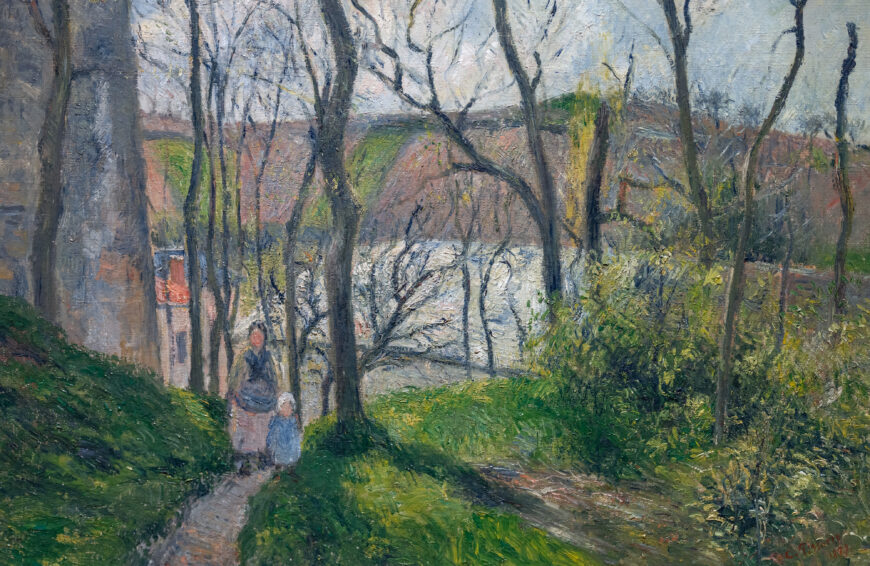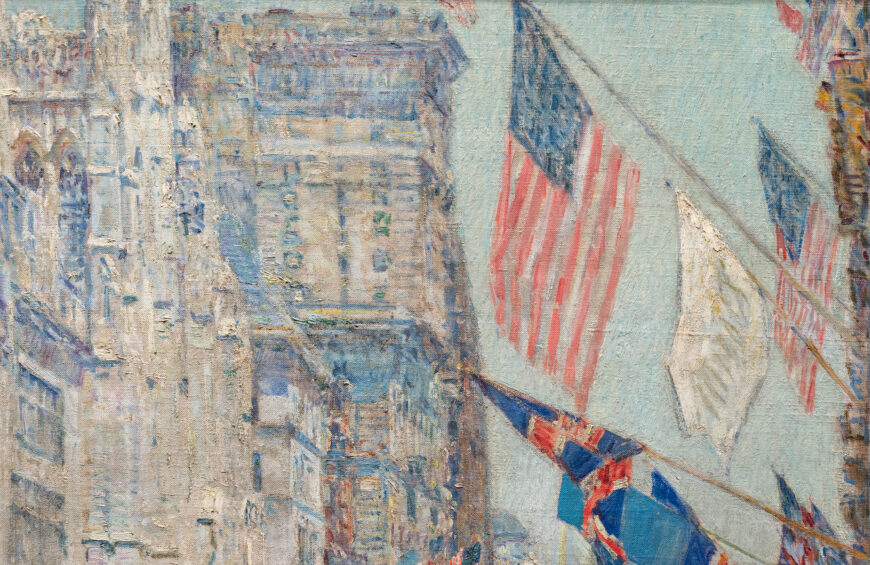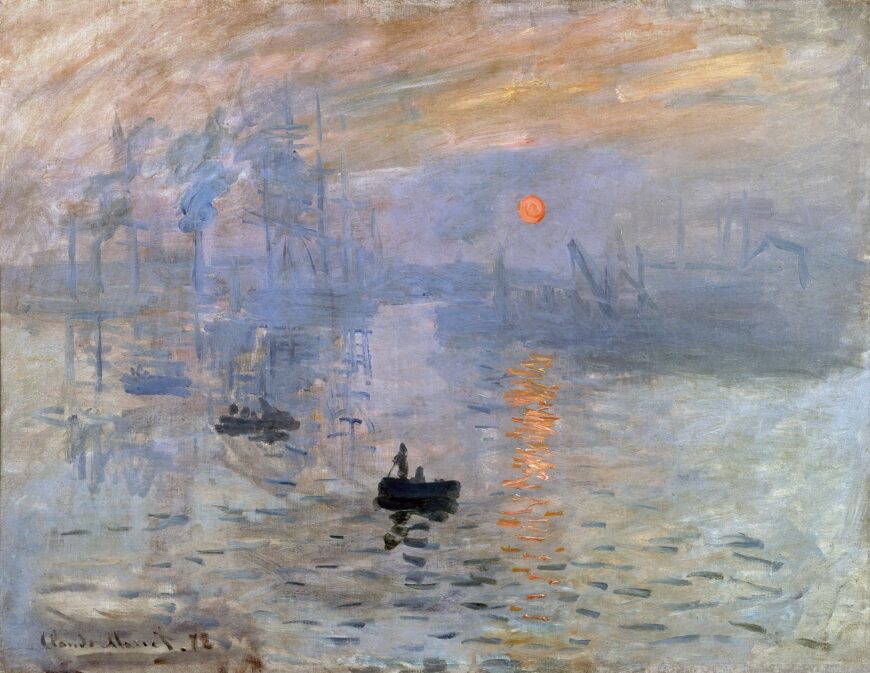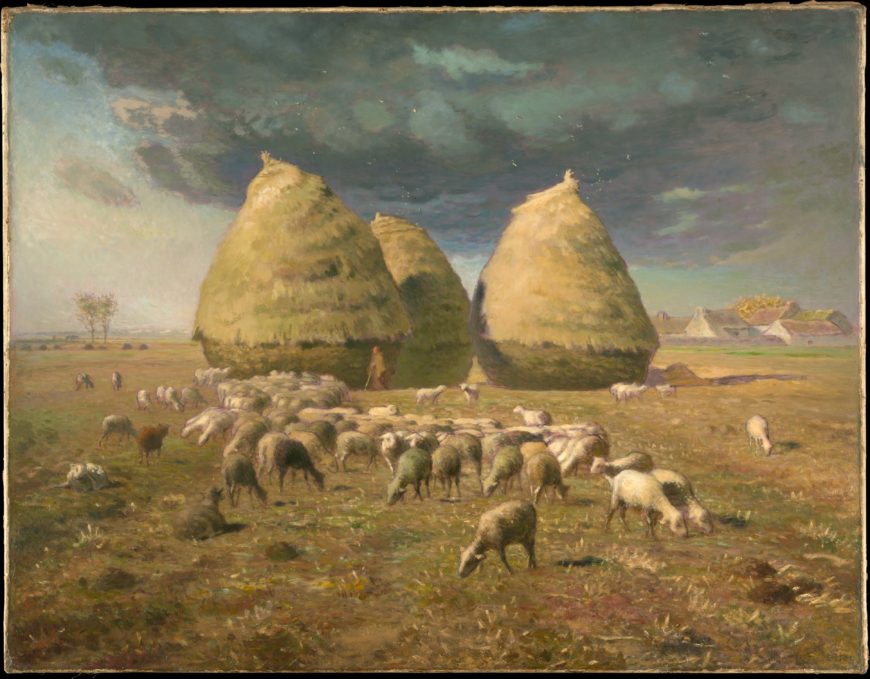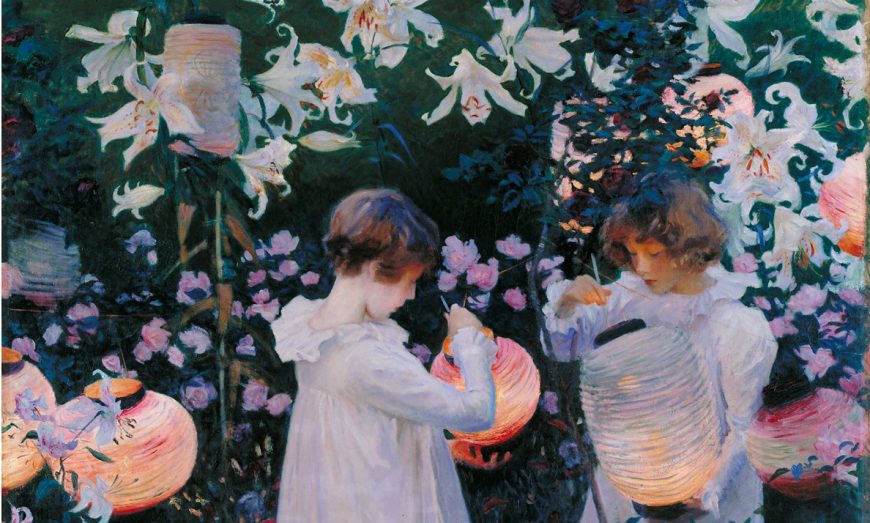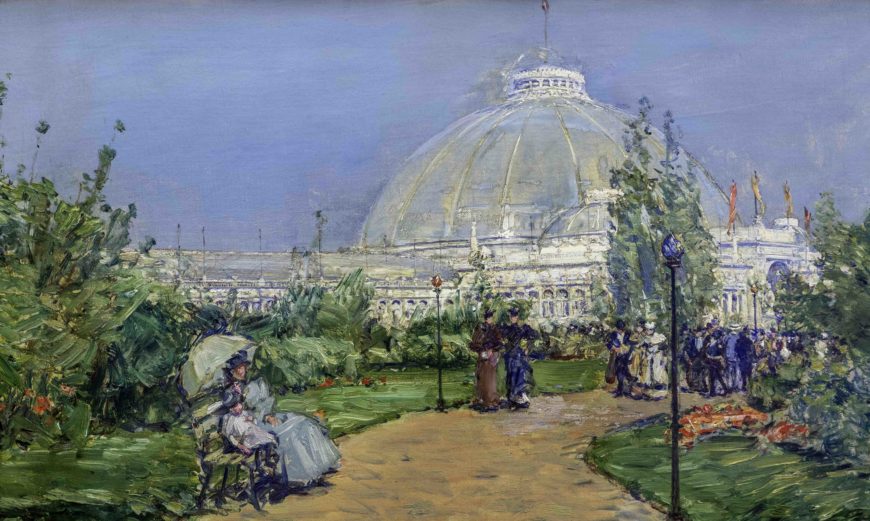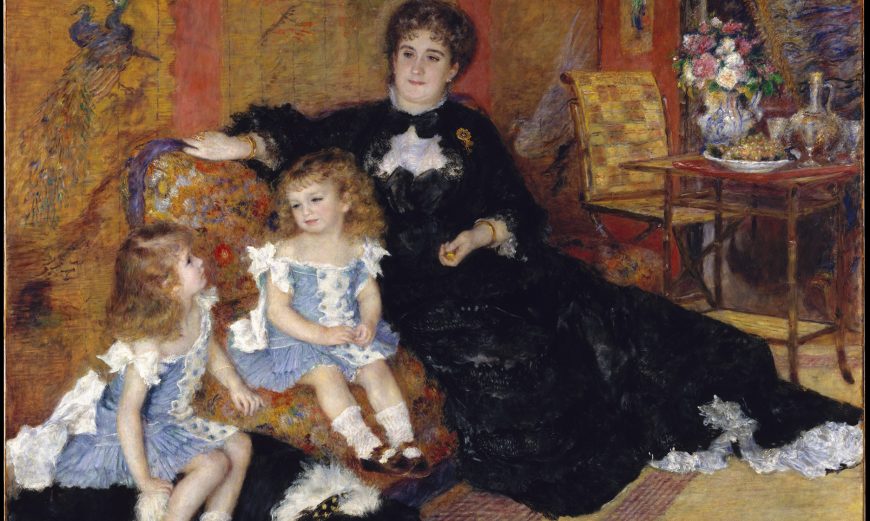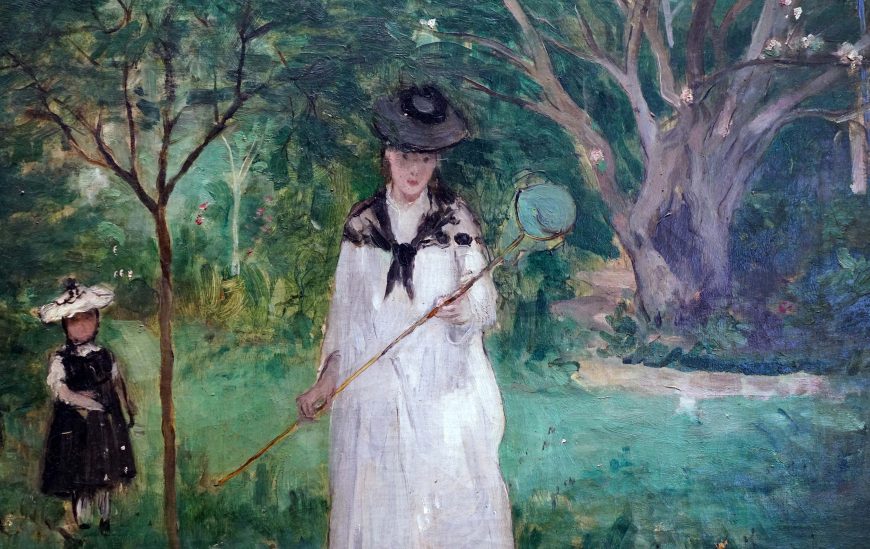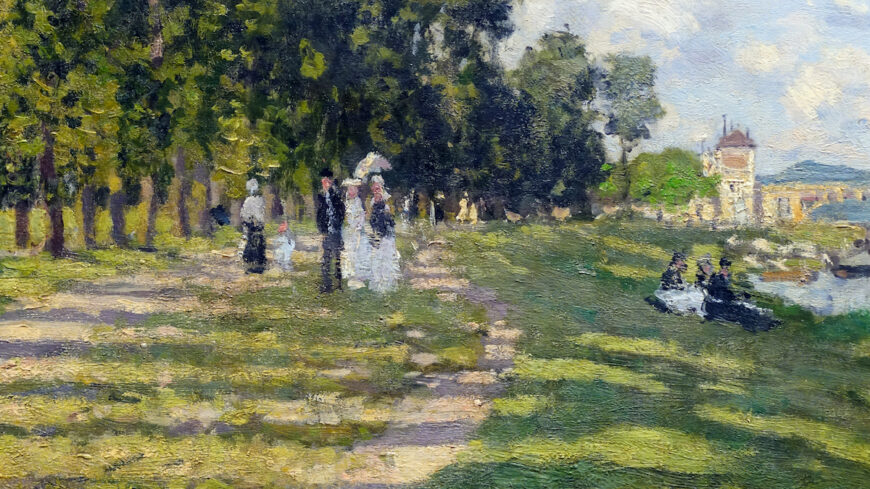How does this painting by Claude Monet achieve such simplicity and complexity at the same time?
A conversation with Dr. Scott Allan, Associate Curator of Paintings, Getty Museum and Dr. Beth Harris, Executive Director, Smarthistory, in front of Wheatstacks (Snow Effect, Morning), 1891, Claude Monet. Oil on canvas, 64.8 x 100.3 cm. Getty Museum, Los Angeles.
How does this painting by Claude Monet achieve such simplicity and complexity at the same time? Let’s take a closer look at the techniques Monet used to capture ephemeral phenomena such as weather, atmosphere, and the effects of time’s passage.
Getty has joined forces with Smarthistory to bring you an in-depth look at select works within our collection, whether you’re looking to learn more at home or want to make art more accessible in your classroom. This six-part video series illuminates art history concepts through fun, unscripted conversations between art historians, curators, archaeologists, and artists, committed to a fresh take on the history of visual arts.
[0:00] [music]
Dr. Beth Harris: [0:04] We’re in the galleries at the Getty Center, looking at a fabulously beautiful painting by Claude Monet, “Wheatstacks, Snow Effect, Morning.”
Dr. Scott Allan: [0:14] Monet is showing us two stacks of grain, wheat specifically, that had been harvested in the early fall and carefully bundled and stored on the field for the course of the winter, potentially 20 feet tall.
[0:30] The palette is dominated by these wonderful icy pinks and blues that give you a sense of the chill air, the snow, and the frosty atmosphere. He’s balanced those cool tones with some warmer tones in the grain stacks where you have rusty browns, little touches of magenta, and even bits of green as well.
Dr. Harris: [0:51] This painting is part of a series that Monet did of wheatstacks in 1890, 1891, looking to capture very specific instances of time and specifics of weather. When the light changed, he’d have to change canvases.
Dr. Allan: [1:09] This is part of the historical reality of Monet’s practice. But the artist helped encourage this mythology of the artist braving all weather conditions, all seasons, to capture these fugitive effects of light and color and weather and atmosphere.
Dr. Harris: [1:24] Although this is an instant in time, we know that he labored over these canvases and that he finished them in the studio. It’s a minute in time, but it’s worked on over time.
Dr. Allan: [1:38] He could work on a picture sporadically with other pictures over months. It’s a very built-up paint surface. To get all the color effects he wanted, he did have to let the canvas dry in between sessions so he could layer the colors.
[1:52] You would think that this is incredibly simple composition, three horizontal bands with the sky, the ridge line of the low mountains in the distance, and then the field, and then these two simple shapes. But In fact, he changes the position and the relative size of the grain stacks quite a bit to get the balance and the spatial relation just so.
Dr. Harris: [2:13] We might see this as a response to some of the criticisms that had been leveled at Impressionism. If we think back to the early 1870s, Monet was painting many paintings entirely outdoors, rapidly, and with figures often in them.
[2:29] But here, those reduced landscape elements, but also this seriousness of purpose and a desire to show that this technique of Impressionism, this interest in capturing the moment, was something profound. Something that the artist had to think carefully about, compose carefully.
[2:50] This wasn’t something that with the earlier paintings might have been called slapdash or executed quickly and rapidly. Working and reworking the paint to get the kinds of effects that he was looking for.
Dr. Allan: [3:01] There’s a real thickness and relief to some of these strokes, what we call impasto. You can see how he laid the brushstrokes down.
[3:09] But he’s also left those strokes space to breathe, where just very thinly covered canvas comes though. It mimics a rough field with scattered patches of snow. He doesn’t use color or atmospheric perspective to create a sense of distance. He varies the facture in a way that very clearly distinguishes the foreground from the sky and the background.
[3:31] That’s very calculated. There’s not a uniform treatment of paint — specific areas, yet different treatment, and that helps create at least a residual sense of space.
Dr. Harris: [3:41] All of these ways that Monet isn’t just going out with his canvas and sitting down and painting what he sees, but making really careful choices.
Dr. Allan: [3:47] The field upon which these grain stacks sit is immediately adjacent to Monet’s property at Giverny, in France. This was a property that he had been renting a house at for a number of years, but just prior to beginning this series he purchased it. So there was a degree of personal investment in this landscape.
Dr. Harris: [4:08] What was it in the late 1880s and 1890s that made this speak to people?
Dr. Allan: [4:13] These pictures come a number of years after major national traumas in France, the first being The Franco-Prussian War, in which France is defeated and has to cede some territories to Prussia. Then the trauma of the Paris Commune, which was an uprising that was brutally suppressed and many people were killed.
[4:32] And so issues of France’s status as a nation were very fraught and complicated in the last decades of the 19th century. A lot of cultural pride has been vested in the landscape and the agricultural heartland of France, which we’ve seen as the basis of the nation’s strength.
Dr. Harris: [4:49] After the “Wheatstacks,” he will go and paint the façade of Rouen Cathedral. And so the land, the cultural patrimony of France, these things that give a sense of unity and strength to the nation, really resonated at this moment.
Dr. Allan: [5:05] The signs of urban modernity, which are so dominant in some of his earlier work, they’re no longer present. And so it’s a more timeless France.
[5:14] I think pictures like this point to a more complex inner experience, this desire to capture a more complex sensation and experience that is behind pictures like this. Not simply a fleeting impression of a moment, but something that transpires over a longer duration and that also has various personal feelings and emotions mixed up in it.
[5:35] [music]


